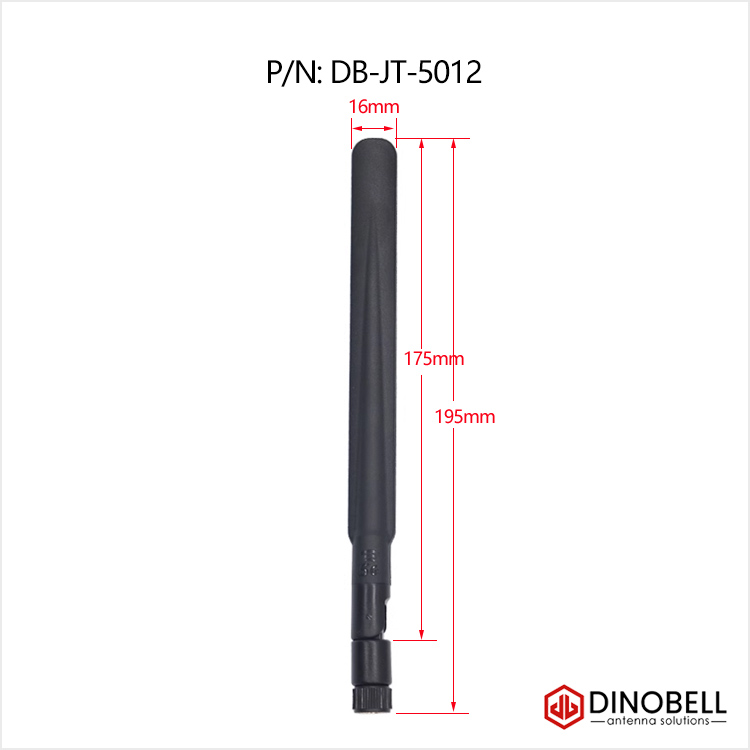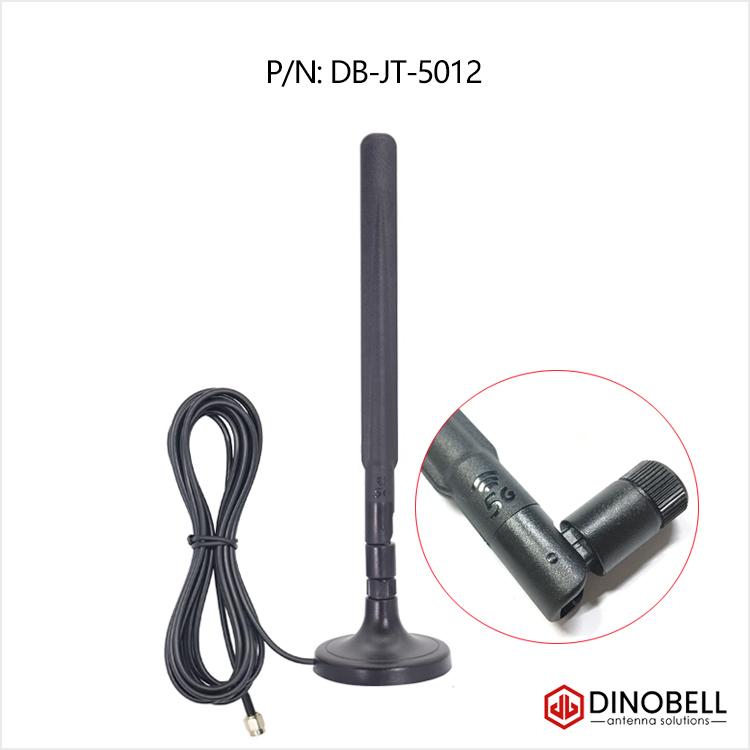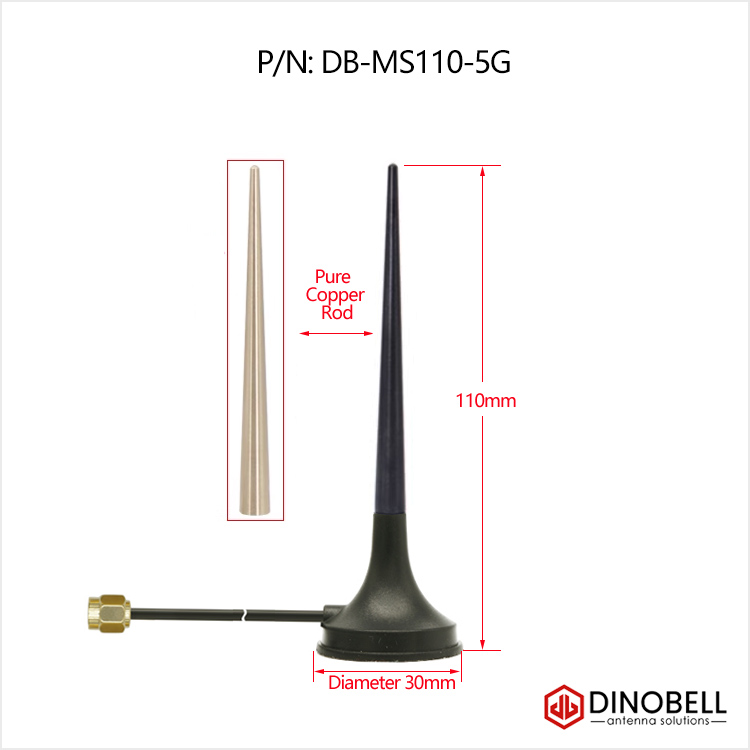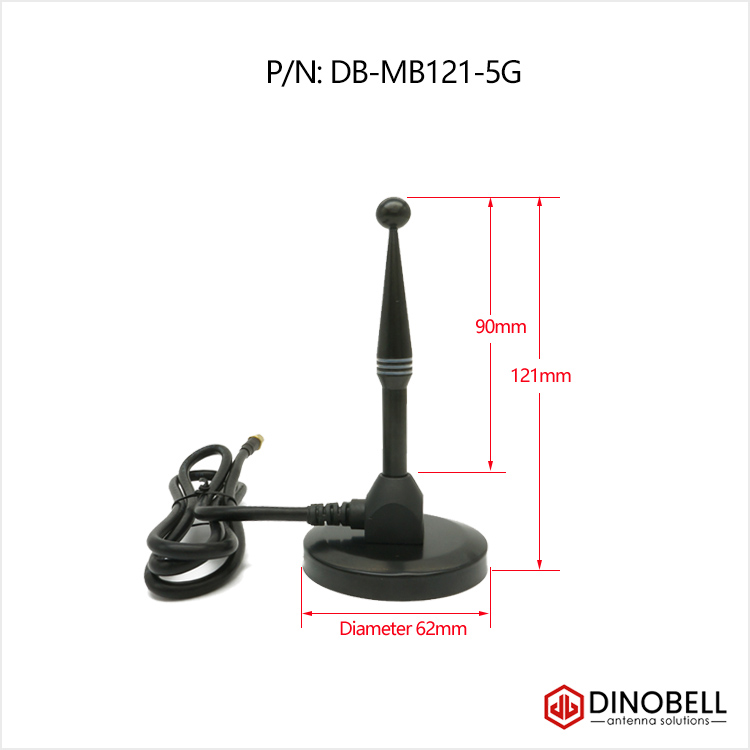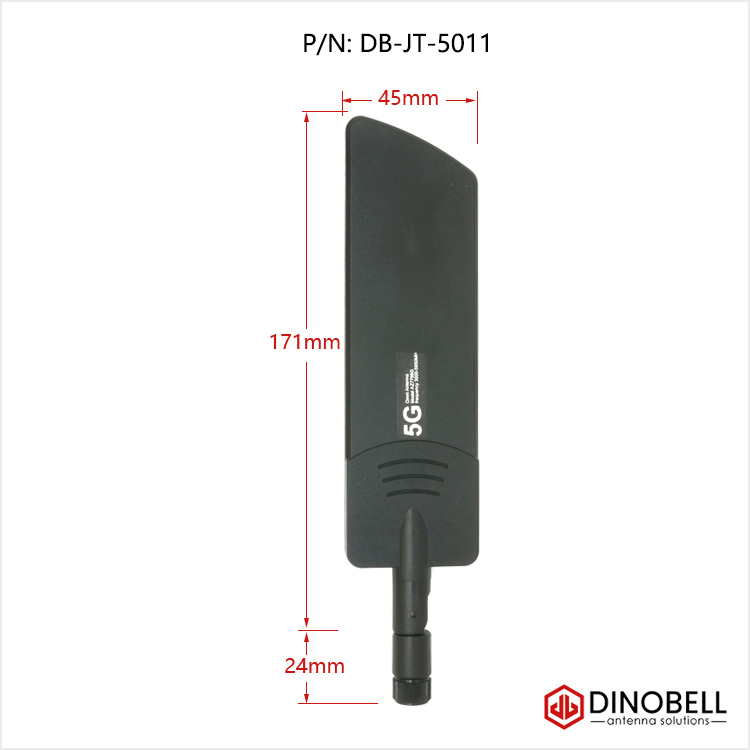Type: 5G Antena SMA Terminal DB-JT-5012 for 5G 4G cellular equipment and network
| Part Number: |
DB-JT-5012 |
| Freq Range: |
700-960/1710-2700/3300-5000/5150-5950MHz |
| Center Freq: |
/ |
| Gain: |
3-5 dBi |
| VSWR: |
<2.0 |
| Impedance: |
50 Ohm |
| Polarization: |
Vertical |
| Radiation Pattern: |
Omni-Directional |
| Max. Input Power: |
25 W |
| Antenna Dimensions: |
H195mm*W16mm |
| Mounting Method: |
SMA Terminal Mount |
| Connector Type: |
SMA-male, RP-SMA-male optional |
Emerging 5G networks feature lower latency, higher capacity, and increased bandwidth compared to 4G. These network improvements will have far-reaching impacts on how people live, work, and play all over the world.
Speed Upgrades
Low Latency
Enhanced Capacity
Increased Bandwidth
Low Latency
Latency measures how long a signal takes to go from its source to its receiver, and then back again. One of the goals for each wireless generation has been to reduce latency. 5G antena New 5G networks will have even lower latency than 4G LTE, with the round-trip transmission of data taking less than five milliseconds.1
5G latency will be faster than human visual processing, making it possible to control devices remotely in near-real time. Human reaction speed will become the limiting factor for remote applications that use 5G and IoT—and many new applications will involve machine-to-machine communication that isn’t limited by how quickly humans can respond. 5G Antena
While agriculture, manufacturing, and logistics will all benefit from lower latency, gamers also eagerly anticipate the 5G rollout. The combination of high speed and minimal lag is perfect for virtual reality (VR) and augmented reality (AR) applications, which are likely to explode in popularity as connectivity improvements create a more seamless, immersive experience.

